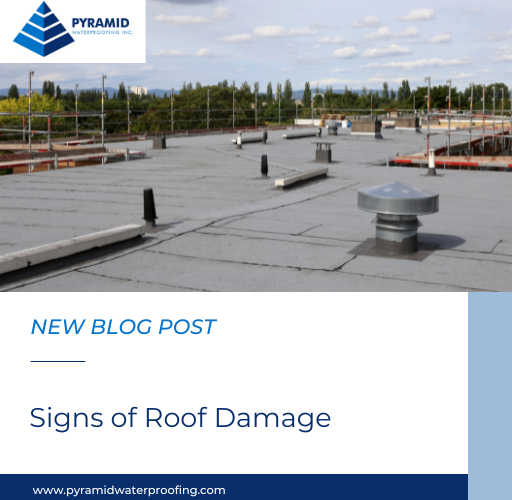Signs of Roof Damage
Looking out for signs of roof damage and regular inspections will ensure that your roof stays in optimal condition and increases longevity. Regular maintenance and necessary repairs will prevent costly damage. There are many interior and exterior signs to look out for when determining if your roof needs repairs.
Interior Signs of Roof Damage
Increased Energy Bills – The purpose of insulation is to reduce thermal transfer and retain cool air. When insulation gets wet or damaged, it significantly reduces its effectiveness. A damaged roofing membrane can also cause your HVAC system to work extra hard. Leaks can cause indoor temperatures to fluctuate causing your HVAC system to constantly adjust the temperature and increase usage.
Stains on the Walls – Leaks can cause discoloration and watermarks on the ceilings and interior walls. It can also cause black or green spots on the walls. While leaks could also be caused by pipes or an exterior wall, it is a good idea to have the roof looked at.
Moisture on Flooring – If you continually notice puddles or damp stops on the floors with no explanation, this can indicate that your roof may have a leak and is in need of repairs.
Odor – When water sits on the wall material or insulation, this can cause a musty odor.
Exterior Signs of Roof Damage

Besides obvious signs of damage like tears, punctures, or other roofing membrane damage, here are some signs that your roof could be leaking or have other damages.
Ponding Water – Standing water on a commercial roof can be caused by many different issues, including clogged drainage, design or installation errors, or wear and tear. If left untreated, ponding water can cause your roofing materials to degrade and lead to leaks and water infiltration.
Vegetation Growth – Seeds and organic material can end up on your roof by birds, wind, or fallen leaves or twigs. If the roof isn’t cleared or debris regularly, this can accumulate, and build up, and eventually, the seeds can germinate. The roots from the vegetation can grow into the roofing seams and damage the membrane.
Missing or Detached Flashing – Flashing is used to secure the roof’s edges and prevent leaks in vulnerable areas. If this is damaged or missing, it could indicate there’s a leak or your roof is at risk of leaks.
Blistering and Bubbling – There are a few reasons your commercial roof can develop blisters or bubbles. Moisture can become trapped under the membrane from poor adhesion causing pockets of water. Thermal cycling, temperature changes causing your roof to expand and contract, and sun exposure, can lead to blisters if your roofing material is not flexible enough.
If you have questions about roof repairs, contact us through our website here or check out our blog to learn more about our commercial roofing services.
